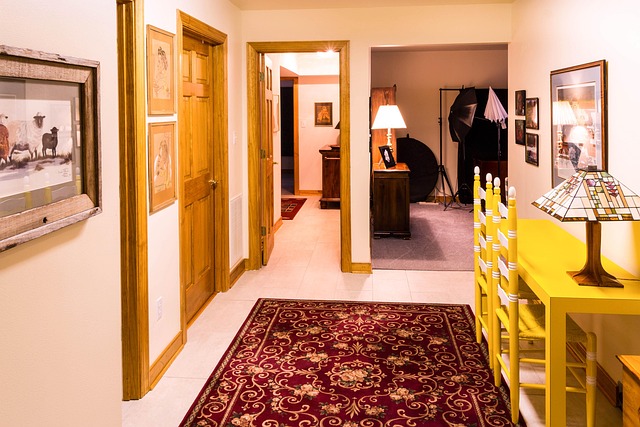Before rearranging furniture, assess your space's layout considering room size, traffic flow, and first impressions (key real estate factors). Evaluate balance between aesthetics and practicality to create a welcoming, functional environment. Strategically arrange furniture to address common issues like cluttered entranceways or lack of conversation zones, enhancing both visual appeal and overall experience of your living space.
Unclutter your space, transform your home! In today’s fast-paced world, a chaotic living environment can be overwhelming. This guide navigates you through the process of decluttering and arranging your furniture for an inviting and aesthetically pleasing real estate experience. From assessing your space and understanding traffic flow to implementing design tips that enhance visual interest, these strategies ensure your home reflects calm and balance. Get ready to revolutionize your living spaces!
Assess Your Space: Understanding the Layout

Before you start rearranging furniture, it’s crucial to assess your space and understand its layout. Consider the size of your room and how much furniture it can comfortably accommodate. Look at the flow of traffic—where people move naturally when entering or using different areas of the room. In real estate, first impressions matter, so make sure your furniture arrangement creates a welcoming and functional environment.
Assessing your space allows you to identify problem areas and make informed decisions about where to place items for maximum impact. Think about the balance between aesthetics and practicality—for example, ensuring there’s enough walking room while still achieving an attractive and cohesive look. By understanding your layout, you can create a harmonious space that not only looks good but also feels good to be in.
– Evaluating current furniture arrangement

Before you begin rearranging your furniture, it’s essential to evaluate your current setup. In the realm of real estate, the way you arrange your space can significantly impact its overall appeal and functionality. Take a step back and observe how each piece of furniture is currently positioned. Are there any blocking views or creating an awkward flow? Identified issues might include a cluttered entranceway, limited seating areas, or a lack of conversation zones. By understanding these challenges, you can make informed decisions on how to arrange your furniture more attractively while enhancing the room’s overall ambiance and utility.
– Identifying problem areas and traffic flow

Identifying problem areas in your home is a crucial first step in any real estate organization project. Take time to observe how people move through each room, noting traffic flow patterns and potential bottlenecks. For instance, in a living room, consider where furniture placement might hinder natural movement or create awkward angles for conversations. By understanding these dynamics, you can strategically arrange furniture to maximize space and encourage comfortable interactions.
Focus on creating designated zones within each area—a quiet reading nook, a central conversation area, or a dedicated entertainment space. This not only enhances functionality but also adds visual interest and charm. Keep high-traffic zones streamlined, ensuring there’s enough room for movement, while making cozy nooks more intimate by organizing furniture in ways that invite relaxation and reflection.






